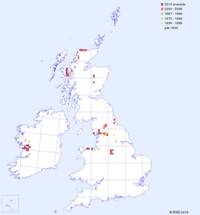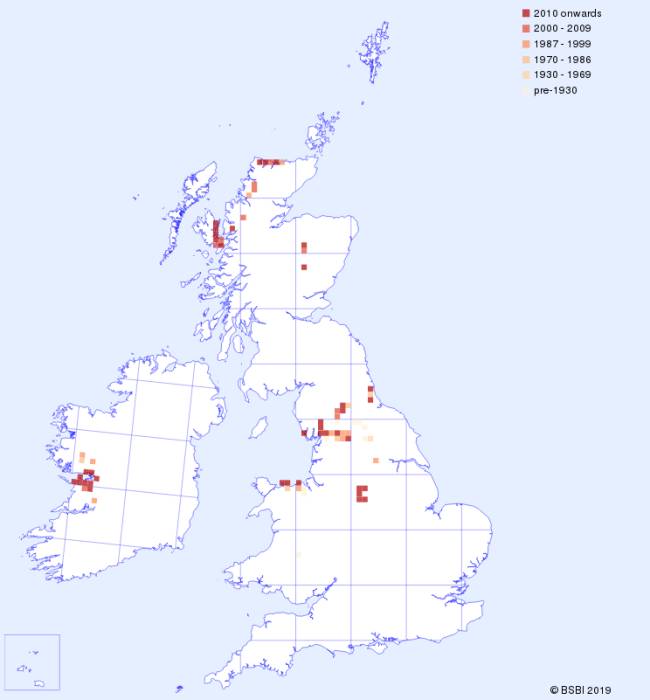In the British Isles Dark-red Helleborine is found exclusively on limestone and is most closely associated with our areas of limestone pavement although it also occurs, again in areas of limestone, on well-drained grassy slopes and meadows and in old quarries. In Britain this orchid is classified as Nationally Scarce, and it occurs only in scattered localised sites, two of the more famous of which are Great Orme in Llandudno, north Wales, and, Bishop Middleham Quarry near Durham, in England. There are also good sites in Cumbria, Derbyshire and Lancashire. In Ireland Dark-red Helleborine occurs on The Burren, in County Clare. Although Epipactis atrorubens plants are somewhat similar to those of Broad-leaved Helleborine Epipactis helleborine, the feature which sets Dark-red Helleborine apart are its deep-red flowers with bright yellow anther caps that gleam in the centre. This orchid flowers between early June and August, peaking in late June and early July. On the European mainland, Epipactis atrorubens occurs from Scandinavia in the north as far south as Greece, Italy and Spain.
| Distribution Map | Key Features | |
 |
Records for the Dark-red Helleborine from BSBI are shown on the map with most recent in front. (Hover the mouse over the small map to expand it.) |
Plant: 12 to 60cm tall, occasionally to 100cm. Stem dull green flushed purple towards the base, or sometimes entirely purple; densely covered with white hairs. |
Image Gallery for Dark-red Helleborine Epipactis atrorubens
| Pollination | Taxonomy & Hybrids |
The Dark Red Helleborine is cross-pollinated by various bees and hover flies which feed on the nectar produced by the flowers. Vegetative reproduction may take place. |
The specific name 'atrorubens' means 'dark red'. |
Articles about Dark-red Helleborine in JHOS
